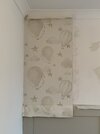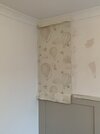- Joined
- 31 May 2020
- Messages
- 220
- Reaction score
- 13
- Country

Hi all.
I am trying abit of wallpapering for the first time. I have applied the first bit of paper on to the wall, and am concerned about ripping the paper when cutting off the excess around the edges of the panelling and corner of the wall.
Does anyone have any advice on the best way to do this? Is it best to cut when the paper is wet, or fully dry?
Many thanks, Paul.
I am trying abit of wallpapering for the first time. I have applied the first bit of paper on to the wall, and am concerned about ripping the paper when cutting off the excess around the edges of the panelling and corner of the wall.
Does anyone have any advice on the best way to do this? Is it best to cut when the paper is wet, or fully dry?
Many thanks, Paul.


